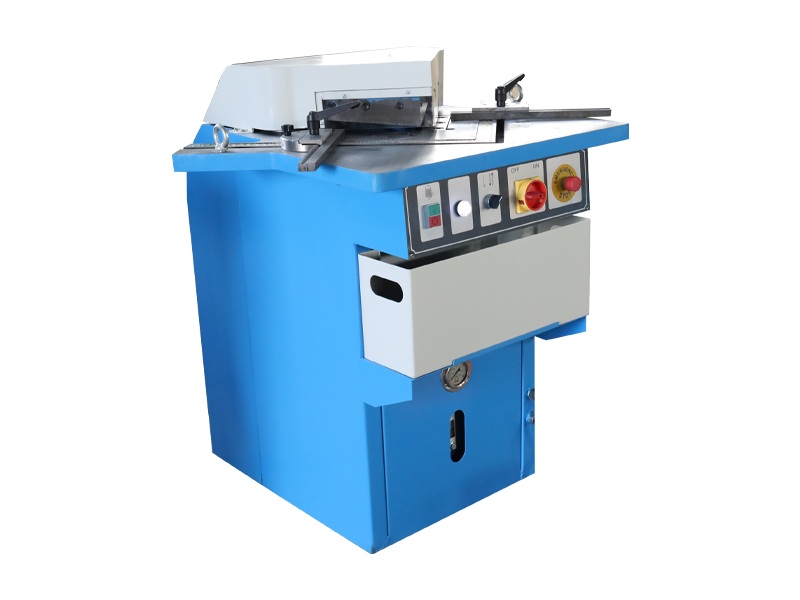In the era of advanced manufacturing, power forming machines serve as core assets for precision metal plastic deformation, enabling the production of net-shape or near-net-shape components with high efficiency, repeatability, and material utilization (>95%). Unlike subtractive processes (e.g., machining) that generate waste, power forming leverages controlled mechanical force to reshape metal sheets, coils, or profiles—aligning with the demands of industries prioritizing sustainability and cost optimization. This technical overview systematically dissects power forming machine technology, including its classification, core technical advancements, industrial applications, and future trajectories, with a focus on quantifiable performance metrics and engineering principles.
1. Definition & Core Technical Principles of Power Forming Machines
Power forming machines are automated or semi-automated equipment designed to deform metallic materials (sheet, coil, or extruded profiles) via plastic flow—without material addition or removal. Their operation is governed by three foundational engineering principles:
- Strain Control: Maintaining uniform deformation (strain variation <5% for critical components) to avoid defects (e.g., wrinkling, necking, springback).
- Force-Velocity Synchronization: Matching applied force (1–10,000 kN) and deformation speed (0.1–30 m/min) to material properties (e.g., yield strength, ductility) — e.g., high-strength steel (AHSS) requires slower speeds (0.5–2 m/min) to prevent cracking.
- Dimensional Precision: Achieving tight tolerances (typically ±0.01–0.1 mm for industrial-grade machines) via closed-loop feedback control (e.g., CNC, servo-driven actuators).
Power forming machines are categorized by their deformation mechanism, each optimized for specific workpiece geometries, material types, and production scales. Below is a technical breakdown of mainstream types, including their working principles and core performance parameters:
2.1 Roll Forming Machines
Working Principle: Continuously bends metal coils (width: 50–2,000 mm) or sheets through a sequential series of precision-machined rollers (typically 6–24 roller pairs). Each roller applies incremental bending (1–5° per pass) until the final cross-sectional profile is achieved.
Core Technical Specs:
- Production Speed: 5–30 m/min (varies by material thickness: 0.3–6 mm for steel, 1–10 mm for aluminum).
- Profile Tolerance: ±0.05–0.2 mm (critical for interlocking components like structural studs).
- Roller Material: H13 hot-work tool steel (for wear resistance; lifespan: 500,000+ meters for mild steel).
Key Variants:
- Cold Roll Forming: Room-temperature operation (ideal for mild steel, aluminum) — dominant in construction and automotive.
- Hot Roll Forming: 500–900°C (for high-strength alloys like Q960 steel) — used in heavy machinery frames.
2.2 Stretch Forming Machines
Working Principle: Clamps metal blanks (size: 0.5–12 mm thick, up to 3 m × 6 m) at the edges and stretches them (tensile strain: 5–25%) over a rigid die (made of aluminum alloy or steel) to form complex curved or compound contours.
Core Technical Specs:
- Max Tensile Force: 10–500 kN (adjustable via hydraulic/pneumatic systems).
- Strain Uniformity: ±2% (critical for aerospace components to avoid fatigue failure).
- Die Compatibility: Interchangeable dies (for quick product changeover; <30 minutes for small dies).
Key Applications Driver: Excels at forming low-wrinkle, high-precision parts (e.g., aircraft wing skins, automotive roof rails) where traditional bending fails to achieve smooth curvature.
2.3 Hydroforming Machines
Working Principle: Uses high-pressure hydraulic fluid (10–100 MPa) to press metal sheets/tubes against a die cavity, enabling the formation of complex, hollow, or asymmetrical shapes.
Core Technical Specs:
- Fluid Pressure Control: ±0.5 MPa (for consistent wall thickness — target: <10% thickness variation).
- Cycle Time: 30–180 seconds per part (varies by part complexity).
- Material Compatibility: Ductile metals (aluminum, copper, low-carbon steel) and advanced alloys (e.g., Ti-6Al-4V for aerospace).
Key Advantage: Eliminates weld seams (vs. assembled components), improving structural integrity by 20–30%.
2.4 Sheet Metal Press Brake Forming Machines
Working Principle: Uses a hydraulic/pneumatic ram (force: 10–2,000 kN) to press a metal sheet against a V-shaped or custom die, creating linear bends (angle range: 0–180°).
Core Technical Specs:
- Bend Tolerance: ±0.1° (for precision parts like electrical enclosures).
- Throat Depth: 100–1,500 mm (determines maximum part length).
- Automation Level: CNC-controlled (up to 12 axes) for multi-bend parts (e.g., sheet metal brackets with 5+ bends).
3. Technical Advancements: Automation & Industry 4.0 Integration
Modern power forming machines have evolved beyond mechanical operation, driven by automation and digitalization to address the demands of high-mix, high-volume manufacturing.
3.1 Automation Technologies
- CNC Control Systems: Equipped with advanced CNC (e.g., Siemens Sinumerik, Fanuc 31i) for real-time adjustment of force, speed, and roller/die position. Enables:
- Program storage for 1,000+ profiles (roll forming) or bend sequences (press brakes).
- In-process error correction (e.g., compensating for springback in AHSS by over-bending 1–3°).
- Servo-Driven Actuators: Replace hydraulic systems in precision applications (e.g., stretch forming), reducing energy consumption by 20–30% and improving response time (<50 ms).
- Automatic Material Handling: Integrated coil feeders, robotic loaders/unloaders, and vision systems for:
- Zero manual intervention (24/7 lights-out production).
- Material alignment accuracy: ±0.05 mm (critical for roll forming of interlocking profiles).
3.2 Industry 4.0 Integration
- Predictive Maintenance: Sensors monitor key parameters (e.g., roller vibration <0.1 mm, hydraulic oil temperature 40–60°C) and use AI algorithms to predict component failure (e.g., roller wear, seal leakage) — reducing unplanned downtime by 40–50%.
- Real-Time Data Analytics: IoT-connected machines transmit production data (OEE: Overall Equipment Efficiency, defect rate, cycle time) to cloud platforms (e.g., MES: Manufacturing Execution Systems) for process optimization.
- Digital Twins: Virtual replicas of machines simulate production runs to validate new profiles (roll forming) or bend sequences (press brakes) — cutting setup time by 50% and reducing material waste from trial runs.
4. Industrial Applications by Sector
Power forming machines are ubiquitous across manufacturing, with each sector leveraging specific technologies to meet unique performance requirements:
4.1 Construction & Infrastructure
- Roll Forming: Produces structural components (e.g., C-channels, Z-purlins, metal roofing panels) from galvanized steel (0.8–2.0 mm) or aluminum (1.0–3.0 mm). Key driver: High production speed (15–25 m/min) for large-scale building projects.
- Hydroforming: Creates custom-shaped architectural elements (e.g., curved facade panels, decorative railings) from aluminum alloy 6063.
4.2 Automotive & Transportation
- Roll Forming: Manufactures automotive frame rails (AHSS: 1.5–3.0 mm) and door beams — benefits from high strength-to-weight ratio and low cost.
- Stretch Forming: Shapes aluminum roof panels and titanium exhaust components (for high-performance vehicles) — ensures aerodynamic precision (tolerance ±0.1 mm).
- Hydroforming: Produces complex parts like engine cradles and fuel rails (reducing part count by 30–50% vs. welded assemblies).
4.3 Aerospace & Defense
- Stretch Forming: Critical for titanium (Ti-6Al-4V) and aluminum-lithium (Al-Li) alloy components (e.g., wing skins, fuselage panels) — requires strain uniformity <3% to meet aerospace fatigue standards (e.g., ASTM E466).
- Hydroforming: Forms Inconel 718 (a nickel-based superalloy) ductwork for jet engines — withstands high temperatures (up to 650°C) and pressure.
4.4 Consumer Goods & Appliances
- Press Brake Forming: Fabricates sheet metal parts for refrigerators, washing machines, and HVAC units (mild steel 0.5–1.5 mm) — benefits from quick changeover (10–15 minutes) for low-volume, high-mix production.
- Roll Forming: Produces aluminum profiles for furniture frames and appliance trim (speed: 8–15 m/min) — emphasizes surface finish (Ra <1.6 μm).
5. Future Trends in Power Forming Technology
The evolution of power forming machines is driven by material innovation, sustainability, and manufacturing flexibility:
5.1 Multi-Material & Advanced Alloy Compatibility
- Development of machines capable of forming composite-metal hybrids (e.g., carbon fiber-reinforced polymer (CFRP) bonded to aluminum) — requires controlled heating (80–120°C) and low-pressure forming to avoid composite delamination.
- Enhanced process control for high-entropy alloys (HEAs) (e.g., CoCrFeMnNi) — machines with adaptive force feedback (±1 kN) to handle their high flow stress (1,200–1,500 MPa).
5.2 Sustainable Manufacturing
- Energy Efficiency: Next-gen servo systems (e.g., permanent magnet motors) reduce power consumption by 30–40% vs. traditional hydraulic machines.
- Recycled Material Adaptation: Machines optimized for forming recycled aluminum (e.g., AA3105) and steel (e.g., scrap-based mild steel) — with adjusted force parameters to account for material variability.
5.3 Hybrid Manufacturing (Additive + Power Forming)
- Integration of 3D printing (additive manufacturing) with power forming: 3D-printed preforms (e.g., for aerospace brackets) are post-formed via stretch/hydroforming to achieve final dimensions — reduces material waste by 60% vs. fully additive parts.
5.4 Collaborative Robotics (Cobots)
- Cobots paired with small-scale power forming machines (e.g., press brakes) for low-volume, custom production (e.g., prototype automotive parts) — enables safe human-machine collaboration (via force-sensing technology) and reduces labor costs.


 English
English  中文
中文  Arabic
Arabic  Russian
Russian  Spanish
Spanish  Portuguese
Portuguese  French
French  German
German  Hindi
Hindi  Thai
Thai  Vietnamese
Vietnamese  Khmer
Khmer  Italian
Italian  Turkish
Turkish  Korean
Korean  Belarusian
Belarusian 


